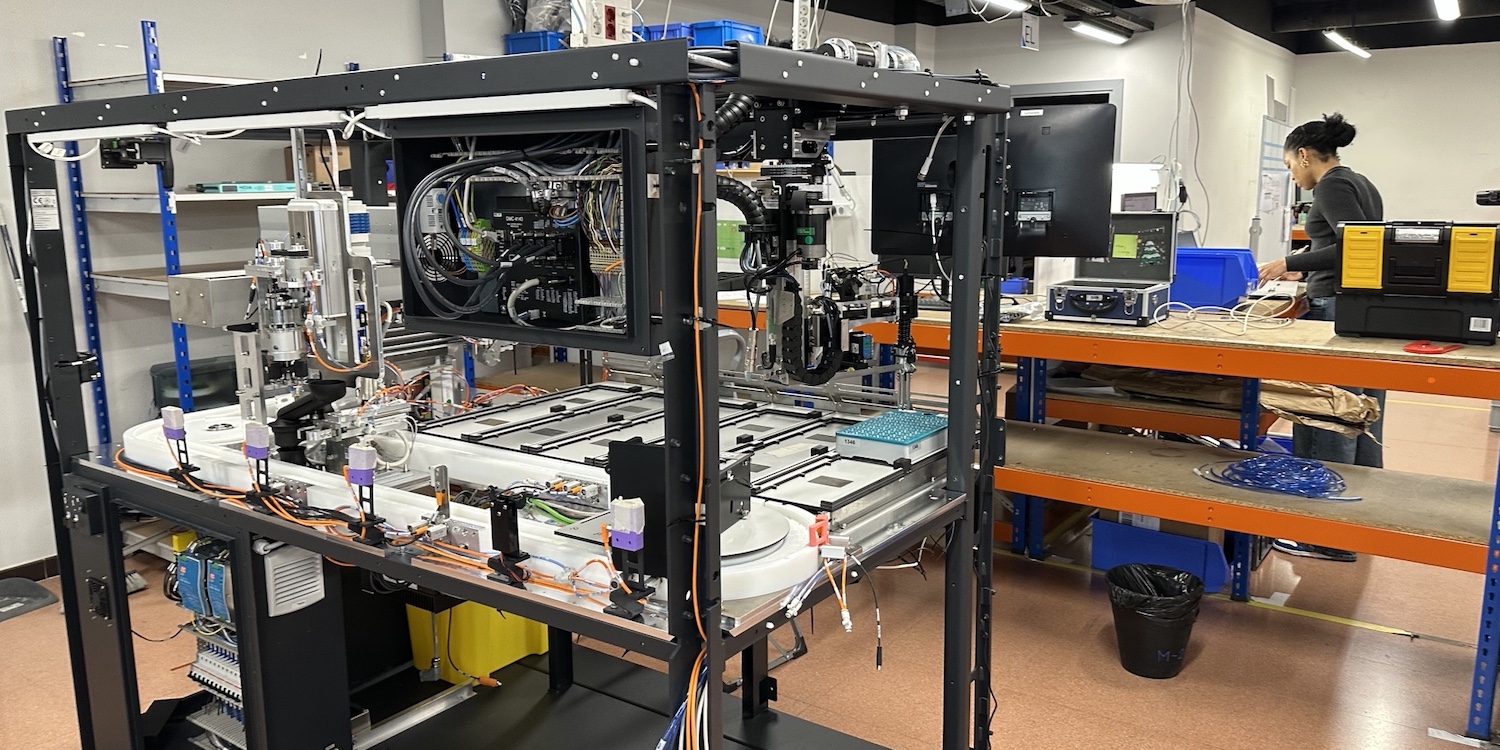
Coming together as a firm using book clubs
FEATURE – Book clubs are a way to boost collaboration and develop lean leadership. A Norwegian firm that has been using them for a decade gives us a few tips on how to make them successful.
Words: Monica Briseid, former Lean Coach at Fibo, with Eivind Reke, Organizational Secretary at LOS Norge
Torfinn Knudsen, the director of Fibo – a Norwegian SME that produce wet room boards and kitchen counters – learned about lean in 2008 from, among others, the trade union leader at the plant. At first, the management philosophy was seen as an opportunity to clean up a messy newly-built factory, but Torfinn saw in lean a different way of thinking that would soon change how the company saw itself.
Between 2008 and 2012, Fibo undertook what became a remarkable transformation that saw it double its productivity (and its turnover), and substantially expand its product range. This incredible gain was achieved through continuous improvement and without much investment in new equipment or new staff.
I joined Fibo in 2010, just over a year after the company had started its journey. At the time I was responsible for leading the sales support function. I was immediately given the opportunity to attend a lean course at the University College Bergen, which encouraged me to try out all the different tools and theories with my team.
One day, one of my operators told me how lucky I was to be able to study lean. This made me think. With so many organizations struggling to get their people to support their lean efforts, I had a team that was telling me they wanted to study its principles and practices! So, I decided to start a weekly book club – initially called a reading circle – to allow the operators to learn with me. The company purchased the same books I was using in university and we carried out the same practical assignments that were required by my course, in addition to the practical experiments that could be useful for the development of the sales support department.
THE RULES OF ENGAGEMENT
The book club quickly turned out to be very beneficial for Fibo. Our department achieved major improvements, as a growing sense of trust and togetherness developed within the team. But the idea of “us vs them” kept coming up in conversations about issues between departments. Since our management team was already running their own book club (inspired by our mentor Torbjörn Hansen), we immediately decided to create a cross-functional book club.
The idea was that this project would help us to develop internal customer/supplier relationships within the company and to remove the silo thinking and, in some cases, unhealthy competition that had appeared between departments.
So, we set off to organize the first cross-functional book club. We decided that one of the managers should be present in every book club, primarily to listen (rather than show off their own knowledge) and to help me to create an environment of mutual trust. We wanted everyone to know that their opinions matter, no matter their job title. Participation to the book club was mandatory and successful completion would result in a raise. The rules were decided at the first meeting and put on a board. The only non-negotiable rule is that we don’t speak ill of anyone; instead, we discuss systems that aren’t working.
Everyone used the same book, Bjarne Berg Wig’s Lean Ledelse for lærende organisasjoner (in English it would be Lean leadership for learning organizations). One chapter is read prior to each meeting. Operators can read during working hours (30 minutes are set aside for this every week), while leaders are expected to do it in their private time. During the meeting, we discuss and reflect on what we have read, trying to understand the many points of view arising.
For each chapter, we have developed practical exercises that support the learning – for instance, we analyse the value stream or look into the internal customer/supplier relationships. The group also practices “go and see” by visiting each other’s gemba, where they train their observational skills by watching a particular operation, sketching out the flow, and drawing spaghetti diagrams. This helps them to understand what is value added work and what is waste, and allows them to suggest improvements. (They also discuss with the operators how the operators experience being observed.)
When a group finishes a book club cycle, we celebrate the achievement with an informal lean quiz, presentations and a diploma ceremony (there is typically pizza, or cake). On the last meeting, the participants’ managers are invited to attend a presentation of the improvements achieved.
A FEW TIPS
We have been running book clubs for eight years, and we have learned a lot in this time. If I reflect on the book clubs that have been most successful at Fibo, I think there are a number of things to consider that I would like to share with you. A few tips for your own book clubs, if you will:
- Create an environment where learning is self-driven, where people go because they want to (not because they have to).
- Learn to discuss and listen to others without retreating into defensive mode.
- Despite your efforts, there might be people who don’t want to hear about lean. Focus on those who have a positive attitude.
- Spend time getting the right mix of people into each group, both personality-wise and with regards to their function. Ten to twelve people per group is an ideal number.
- Someone from the management team should be present at each meeting, even if it means that some of our top managers have taken part in several book clubs over time.
- To get a higher participation rate (people in support function often find it hard to take part in meetings, because they are travelling for example), run two parallel groups at different times, so that people can switch between the two. This system means more work for the facilitator (for me, it also meant more baking, as I had gotten into the habit of bringing home-made snacks to each book club meeting).
- Once a book club is completed, follow up with each participant and give them new personal challenges. It’s all too easy to “lose the spark” after the meetings have ended, and continuous learning can only stem from continuous challenging.
MAKING OUR COMPANY STRONGER
Next to the weekly management training that has been running since 2009 (also structured as a book club) and the daily stand-up meetings, I believe that the cross-functional book club has been the most important thing we have done to develop the competence of our employees, improve cross-functional communication, teamwork and interaction.
Several of our employees have thanked us for what they have learned from the book club. Many have even requested new book clubs, and we have started to run them on a voluntary basis. We have also created standard training material – on topics like 5S, standard work, flow and kata – using the same method of learning and exploring that we use in the clubs.
The benefits this unique approach to teaching and learning has brought us are multiple. First of all, it’s clear that our internal customer/supplier relationships have improved: we find it is easier to work together towards a common goal and with the same end customer in mind.
Through the clubs, we have also discovered a lot about our culture and our company. Learning together supports what we call our “living process” (the direction of improvement given by management) with higher involvement from the team members. We see things ourselves more as part of a whole system now, from KPIs in our own team and other teams, our shared values and how we collectively contribute to a good work environment. We have developed a better understanding of each other’s problems and the challenges we face every day. Our CFO or Purchase manager hears about problems that production has and operators learns about the challenges that purchasing face. Our customer support centre employees contribute with a better understanding of how our customers think of us. We learn how to better help each other, and we get a better understanding of the role of the manager and the operator. It has also clarified how we can better support our external suppliers by clarifying what we actually expect from them.
The book clubs have also taught us about lean and why we want to use it as our way of thinking, our way of working. Finally, it has given us a space to reflect on customer value and what this means for Fibo’s customers, and what we ourselves appreciate as customers.
They have brought us together and made us a tight knit organisation. At the moment we are 120 employees and the book clubs have made it easier to cooperate on problem solving and improvement work across departments and teams.
THE AUTHORS


Read more


CASE STUDY – Lean allowed NGNY to evolve from creative improvisation to structured performance by redesigning operations and standardizing processes – achieving reliable deliveries, built-in quality, and a cultural transformation.


FEATURE – In this frank account, a senior executive discusses the challenges facing an oil and gas company as it tries to manage the complexity of its upstream and downstream supply chains.


FEATURE – The author discusses the most common mistakes leaders make during gemba walks and the things they need to keep in mind to make the most of this important management practice.


FEATURE – In the age of complexity and disruption, flowing value to customers as quickly as possible is critical. The new Toyota Flow System strives to address this issue.

